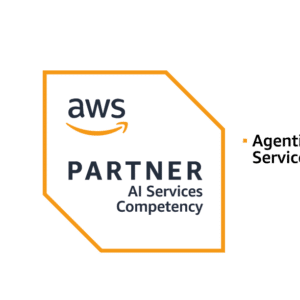
When it comes to optimizing your organization’s IT infrastructure, moving to the cloud has become a popular choice. And for many businesses, Amazon Web Services (AWS) is the go-to platform for their cloud migration needs. With its robust set of services and global infrastructure, AWS offers a wide range of benefits for organizations of all sizes.
Embracing AWS not only signifies a shift towards scalable and efficient computing but also marks a commitment to innovation and agility. The journey to AWS cloud migration, while intricate, opens up a realm of possibilities for enhancing your business’s technological footprint.
But migrating to AWS is not a simple task. It requires careful planning, a thorough understanding of migration strategies, and the right tools to ensure a seamless transition. In this article, we will explore the strategies and tools that can help you achieve a successful migration to AWS and reap its numerous benefits.
Ready to take the first step towards a seamless AWS migration? Contact DinoCloud today and let our experts guide you through a customized migration plan tailored to your business needs.
Key Takeaways:
- Selecting the right migration strategy is crucial for a successful migration to AWS.
- There are seven migration strategies, including retire, retain, rehost, relocate, repurchase, replatform, and refactor.
- Tools like AWS Application Migration Service and AWS Cloud Migration Factory Solution can automate and streamline the migration process.
- AWS Application Discovery Service and AWS Migration Hub provide valuable insights and tracking capabilities for your migration.
- AWS Landing Zone and AWS Control Tower help establish secure and well-architected multi-account AWS environments.
Understanding the Migration Strategies
The migration strategies for moving applications to AWS vary depending on the specific goals and requirements.
Each migration strategy serves a unique purpose and aligns with different business goals and technical requirements. For instance, a startup might prefer the agility of the ‘rehost’ strategy, while a financial institution might opt for the ‘refactor’ strategy to ensure compliance and security in the cloud.
Here, we will explore the different migration strategies, their purposes, and how they can benefit your organization.
The Retire Strategy
The retire strategy is used for applications that no longer serve a purpose and can be decommissioned. It involves identifying and retiring applications that are outdated, redundant, or no longer aligned with your organization’s objectives.
The Retain Strategy
The retain strategy is for applications that are not yet ready to be migrated or have specific dependencies that need to be addressed before migrating. It involves keeping these applications in their current environment until they are ready for migration.
The Rehost Strategy
The rehost strategy, also known as “lift and shift,” involves moving applications to AWS without making any changes to the application itself. This strategy is typically used when time is a constraint or when the application does not need to take advantage of the cloud-native features provided by AWS.
The Relocate Strategy
The relocate strategy is used to transfer applications or instances to a different environment or location within AWS. It involves moving the application from one AWS region or availability zone to another, optimizing resource allocation and improving performance.
The Repurchase Strategy
The repurchase strategy involves replacing the existing application with a different product or service, such as a Software-as-a-Service (SaaS) solution. This strategy is often chosen to take advantage of cost savings, improved functionality, or better alignment with business needs.
The Replatform Strategy
The replatform strategy involves making optimizations to the application to improve efficiency and take advantage of cloud capabilities. This may include rearchitecting the application to adopt cloud-native features, optimizing databases, or refactoring code for better performance.
The Refactor Strategy
The refactor strategy involves re-architecting the application to leverage cloud-native features and improve scalability and performance. This strategy is often chosen when there is a need for significant changes to the application’s architecture to optimize it for the cloud.
By understanding these migration strategies, you can choose the most suitable approach for your applications, taking into account your organization’s goals, timeline, and resource constraints.
It’s essential to equip yourself with a comprehensive toolkit that not only facilitates a smooth migration but also ensures that your cloud infrastructure is optimized, secure, and aligned with your business objectives.
Key Tools for Migration to AWS
When it comes to migrating to AWS, having the right tools at your disposal can make all the difference. Here are some key tools that can help streamline the migration process and ensure a successful transition:
- AWS Application Discovery Service: This tool helps you gather valuable insights about your on-premises data centers, allowing you to better understand your workloads and plan your migration strategy accordingly.
This tool is particularly beneficial for organizations with complex environments, as it provides detailed insights into application dependencies and performance characteristics, enabling informed decision-making during the migration process. - AWS Migration Hub: Automate and track your application migrations across multiple tools with AWS Migration Hub. It provides a central hub for planning and monitoring your migration progress, making it easier to stay organized and ensure a smooth migration process.
- Migration Partner Solutions: Leverage the expertise and guidance of migration partner solutions to navigate the complexities of moving your applications to AWS. These partners can provide valuable assistance throughout the migration process, ensuring a seamless transition.
- AWS Landing Zone: Set up secure and well-architected multi-account AWS environments with AWS Landing Zone. It enables you to create a standardized foundation for your workloads, making it easier to manage and scale your infrastructure.
- AWS Control Tower: With AWS Control Tower, you can establish and govern a secure and compliant multi-account AWS environment. It provides guardrails and best practices to help you maintain control and ensure the security of your AWS resources.
Furthermore, AWS Control Tower simplifies the governance of your cloud environment, ensuring that your AWS accounts adhere to company policies and best practices from the start. This is crucial for maintaining a secure and compliant cloud infrastructure.
By utilizing these tools, you can streamline your migration to AWS, reduce complexity, and ensure a successful transition. Whether you need to gather insights, automate migration tracking, enlist the help of migration partners, or establish a secure AWS environment, these tools have you covered.
| Tool | Description |
|---|---|
| AWS Application Discovery Service | Gathers information about on-premises data centers to better understand workloads |
| AWS Migration Hub | Automates planning and tracking of application migrations across multiple tools |
| Migration Partner Solutions | Provides expertise and guidance throughout the migration process |
| AWS Landing Zone | Sets up secure and well-architected multi-account AWS environments |
| AWS Control Tower | Establishes and governs a secure and compliant multi-account AWS environment |
Now that you understand the key strategies and tools for a successful migration to AWS, it’s the perfect time to explore how this platform can be a catalyst for broader digital transformation within your organization. Discover how other businesses are leveraging AWS to drive their digital transformation in our article Unleashing Digital Brilliance: AWS Paving the Way for Business Transformation in the Digital Realm.
This resource will provide you with valuable insights on how to maximize the impact of AWS beyond migration, towards continuous innovation and business growth.
Conclusion
A successful migration to AWS requires careful planning, the selection of the right migration strategy, and the use of appropriate tools. Understanding the different migration strategies, such as retire, retain, rehost, relocate, repurchase, replatform, and refactor, is crucial in determining the best approach for your applications.
By choosing the retire strategy, you can decommission applications that no longer serve a purpose, while the retain strategy allows you to handle applications with specific dependencies or that are not ready for migration. The rehost strategy, also known as lift and shift, is ideal for moving applications to AWS without any modifications. The relocate strategy helps you transfer applications or instances to a different environment or location within AWS.
In addition to these strategies, there are powerful tools available to simplify the migration process. The AWS Application Discovery Service provides valuable insights into on-premises data centers, while AWS Migration Hub automates the planning and tracking of application migrations across multiple tools. Partner solutions can offer expertise and guidance throughout the migration, and solutions like AWS Landing Zone and AWS Control Tower help you set up secure and well-architected multi-account AWS environments.
By following established best practices and leveraging these tools, you can ensure a seamless and efficient migration to AWS, unlocking the benefits of cloud infrastructure and empowering your organization to thrive in the digital age.
Feeling overwhelmed by the complexity of AWS migration? We can help. Maximize your AWS investment with DinoCloud’s migration services. Reach out to us for a strategic consultation and unlock the full potential of cloud computing for your business.
FAQ
What is the retire strategy in AWS migration?
The retire strategy is used for applications that no longer serve a purpose and can be decommissioned.
What is the rehost strategy in AWS migration?
The rehost strategy, also known as lift and shift, involves moving applications to AWS without making any changes to the application itself.
What is the relocate strategy in AWS migration?
The relocate strategy is used to transfer applications or instances to a different environment or location within AWS.
What is the replatform strategy in AWS migration?
The replatform strategy involves making optimizations to the application to improve efficiency and take advantage of cloud capabilities.
What is the refactor strategy in AWS migration?
The refactor strategy involves re-architecting the application to leverage cloud-native features and improve scalability and performance.
What are AWS Landing Zone and AWS Control Tower?
AWS Landing Zone and AWS Control Tower are two solutions that help set up secure and well-architected multi-account AWS environments.
LinkedIn: https://www.linkedin.com/company/dinocloud
Twitter: https://twitter.com/dinocloud_
Instagram: @dinocloud_
Youtube: https://www.youtube.com/c/DinoCloudConsulting



